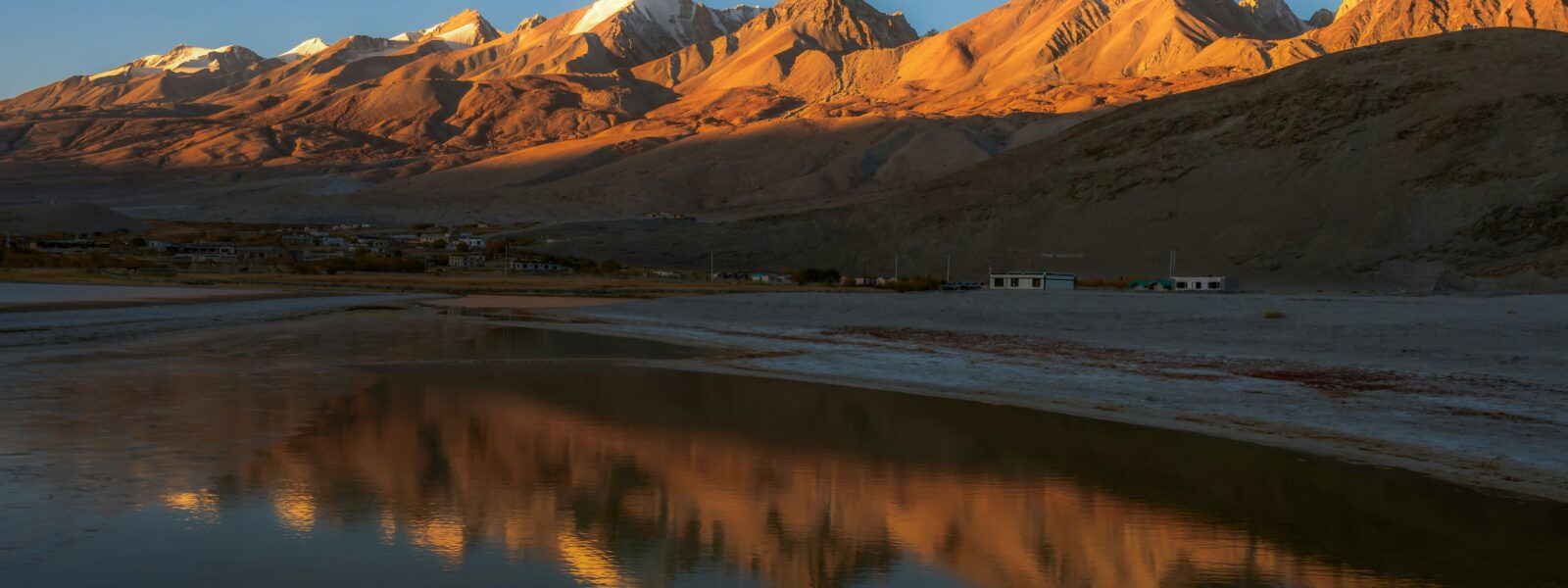The Forgotten Pulse of the Highlands
By Elena Marlowe
I. A Land Sculpted by Wind and Silence
Where stillness becomes a language
In the upper reaches of the Trans-Himalayan plateau, the air grows so thin that thought itself feels transparent. Mountains stand not as barriers but as reminders of time’s endurance, sculpted by ice, wind, and a silence that hums in the bones. Here, Ladakh begins—an expanse of pale stone and ancient whispers, where the earth carries the pulse of forgotten migrations. Villages cling to valleys like small embers of human warmth, each one a quiet defiance against immensity. High-altitude light flattens distance, turning every ridge into a mirage of proximity. Travelers call the place silent, yet below the apparent quiet runs a living rhythm—adaptation, movement, the careful economy of survival. The cold desert holds a map not of roads but of hoof-written paths that have existed for millennia. To see clearly, you must slow until stillness becomes a language. Here, the essence of wildlife ladakh thrives in the shadows and the winds, a testament to nature’s resilience.
Attention as a way of belonging
In this silence, every being is a storyteller. Wind carries the history of glaciers; snow remembers where rivers were born. Between the mountains’ folds, a rhythm continues, carried by creatures whose hooves mark invisible boundaries of survival. At dawn on the Changthang plains, herds move like breath on the horizon. The highlands are deliberate, not empty; they ask for a humility that begins with attentive presence and ends in companionship with the land.
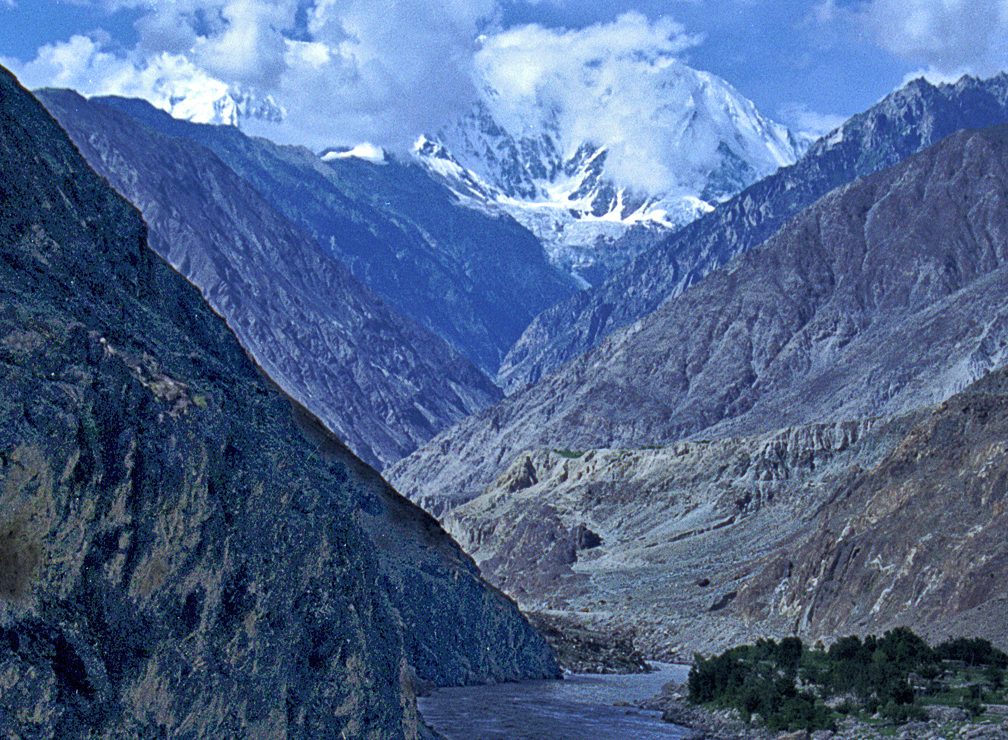
II. The Shapes that Move Across the Plateau
Wild grammar of motion
They appear at the edge of perception—a shimmer on the slope, soft clatter of stone. Wild ungulates inhabit Ladakh’s mythic altitude with a grace that seems both ancient and necessary. Blue sheep cling to cliffsides like echoes of wind. The Tibetan wild ass, or kiang, passes across the salt flats with unhurried confidence. On ridgelines, ibex trace the sky with crescent horns. These animals are the mountain’s own language of continuity, translating stillness into movement and scarcity into ritual.
Species as living memory

Each carries a rhythm of survival. Ladakh urial descend at dusk toward fertile valleys, cautious yet curious. The Tibetan gazelle flickers across grasslands—a fragile reminder that rarity can be a kind of radiance. The great argali roams in dwindling numbers, bearing the dignity of an age when the earth felt wider. Their paths overlap ours—herders, pilgrims, travelers—yet they belong wholly to no one. To follow them for an hour is to feel the thin seam between human purpose and the patient logic of the land.
There are moments in Ladakh when you learn that endurance is not defiance—it is devotion.
III. Between Pashmina and the Wild
The soft economy of a hard place
On the wind-hardened plains of Changthang, tents stitched from yak hair ripple at the horizon. Life revolves around the fine warmth of Pashmina, combed from goats that graze where few things dare to grow. In this economy of resilience, every strand is a thread between survival and aspiration. Yet softness has a shadow: when herds multiply to meet distant desire, the wild pastures shrink. Blue sheep and gazelle step aside for domestic flocks, and balance tilts—quietly, then clearly.
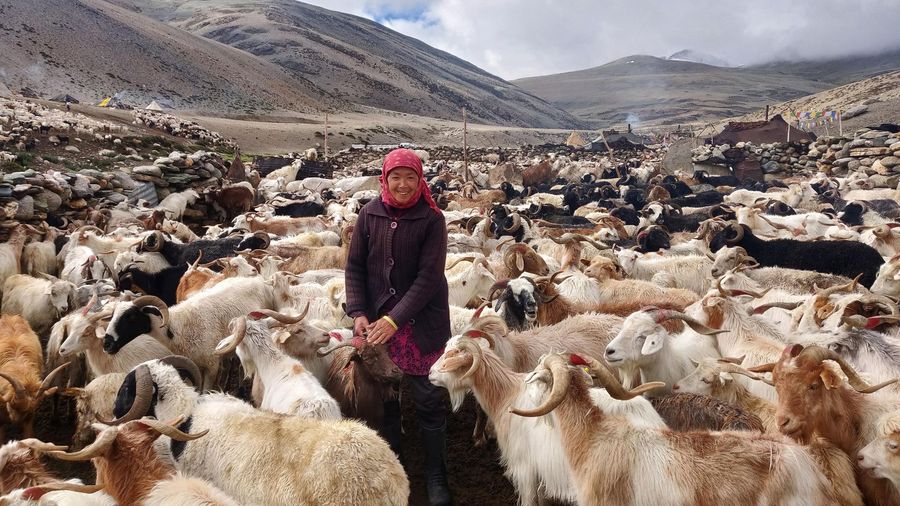
What the wind gives, it also keeps
Beside a loom, a nomad woman once told me, “The land gives, but it takes back.” Her words carried no bitterness, only knowledge. Around us, goats moved like shifting snowdrifts; in the distance, a small band of kiang stood watching. Every economy has ghosts; here, it is the vanishing hoofprint erased before it is remembered. The task is not to romanticize the wild against people, nor people against the wild, but to honor a coexistence that keeps future mornings possible.
IV. Valleys That Remember Less
Fields where memory thins
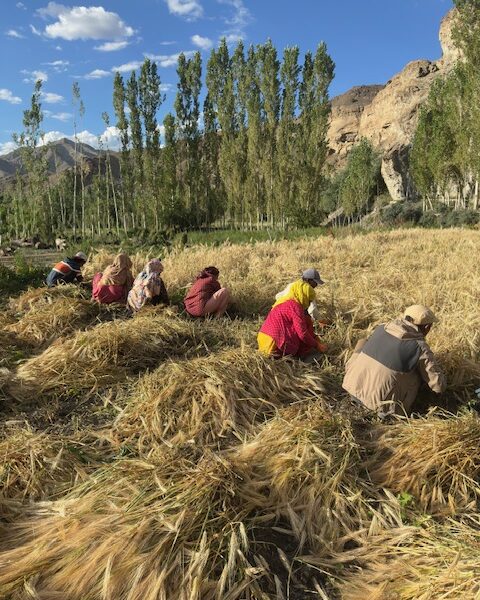
In the western valleys, the air feels thicker, more domesticated. Barley sways where wild herds once grazed. Farmers speak of urial with a mixture of frustration and awe: “They eat what we grow, but they were here before us.” At dusk, the line between cultivated and wild blurs. An old courtesy persists—some leave a narrow corner of field untouched, a tacit treaty with older claims. Here, conflict and coexistence are neighbors; both are written into irrigation stones and footpaths.
Small treaties of survival
The highlands do not forget, but they forgive in silence. The valleys teach a practical grace: guard what you must, share what you can, and learn to live with the glint of horns at the margin of your harvest. The lesson is not perfect harmony but resilient neighborliness, a choreography of near-misses and mutual allowances.
V. The Fragile Cartography of Survival
Maps of what is missing
Ladakh’s truest map is a ledger of presences and absences. Each valley tells a story of disappearance: the gazelle that no longer runs there, the yak trail broken by a new fence, the hush that follows hoofbeats. Progress advances with its own certainty—roads cut remote gorges, dams rise beside prayer stones. Endurance continues, but at a cost measured in fewer herds and fewer wild eyes catching dusk light. Fragility is almost invisible, like the thin air—understood fully only when it is lost.
Drawing the living, naming the lost
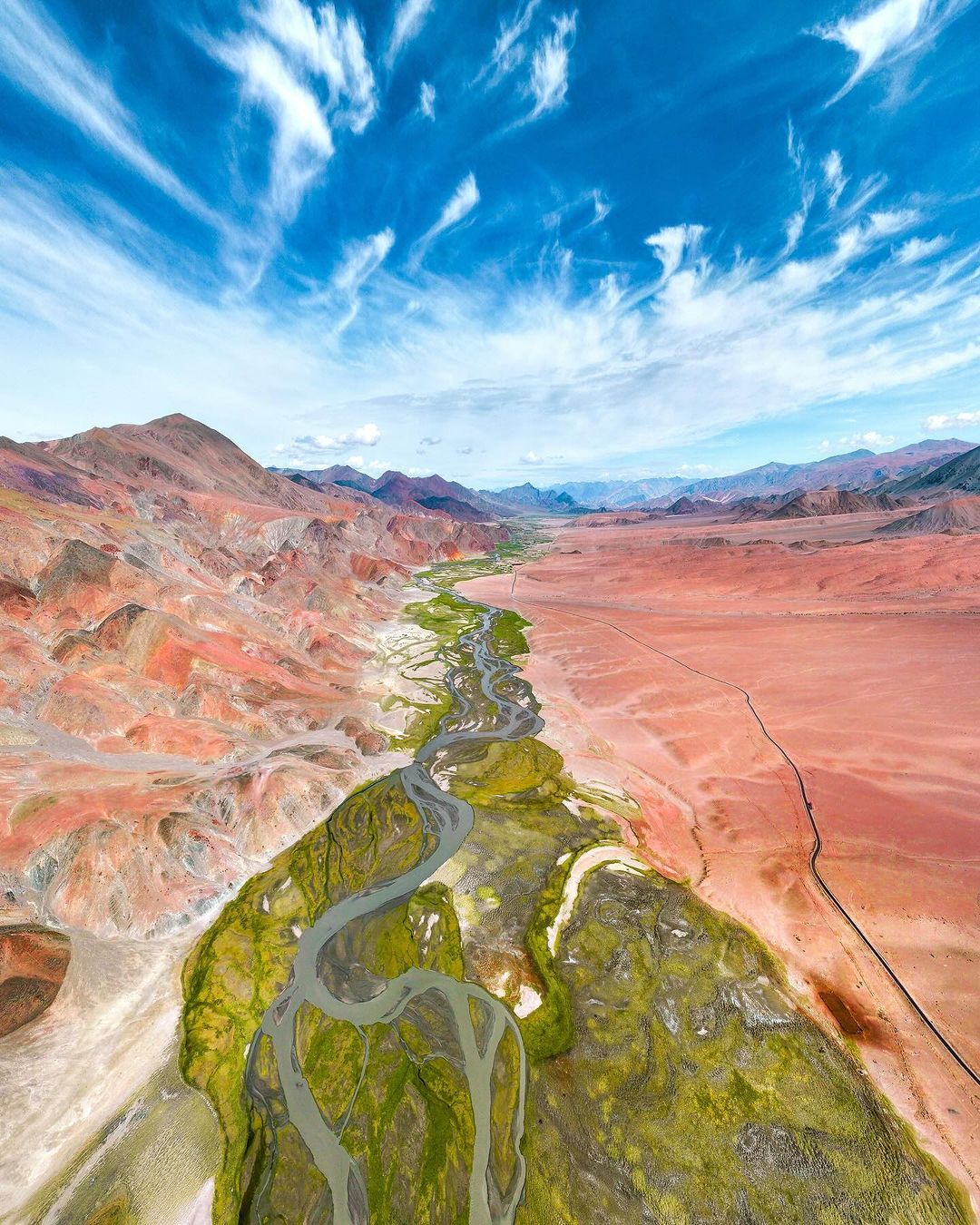
To map honestly is to draw both what remains and what no longer returns. East of the broad riverbeds, nomads speak of grasses that once quivered with gazelles. Westward, farmers recall the echo of horns where tractors now idle. And yet the wild persists—quiet, diminished, unyielding—keeping to corridors between mountains and to seasons that still remember them. Conservation here is not an abstract; it is a daily ethic of thresholds, a way of leaving enough unsaid that life can continue its own sentence.
VI. A Prayer Written in Dust and Hoofprints
Dawn as scripture
At first light, the wind writes its scripture across the plains. Dust rises like incense; sunlight touches distant horns—ibex, argali, kiang—each a verse in a hymn older than our names. There is no temple but the movement of herds, no liturgy but the low thunder of yak in a far valley. Faith here is physical—an unspoken belief that life, even when cornered by frost and altitude, insists on beauty.
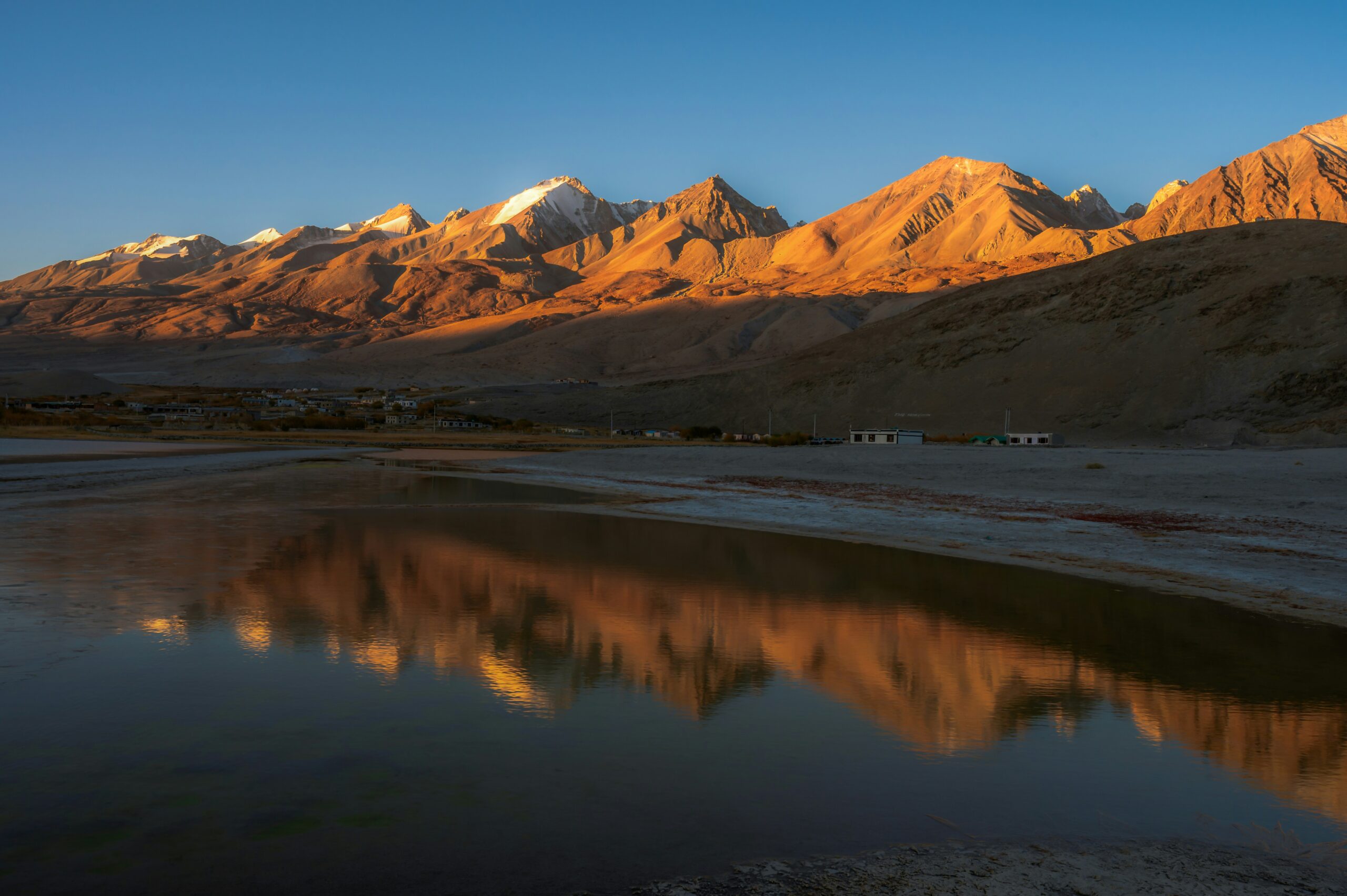
The library without books
A monk near Hanle once said, “Every creature born here carries two prayers—one for itself, and one for the silence that hides it.” Since then I’ve thought of the highlands as a library without books: ridges, pawprints, and forgotten horns composing an unwritten chronicle. Like all libraries, it is endangered by forgetfulness. Wildness is not rebellion against civilization; it is civilization’s memory—reminding us who we were before we became only what we made.
What remains after the wind
When night gathers, mountains become silhouettes of thought; stars assemble like old witnesses. Somewhere out there, the wild still moves—perhaps fewer, perhaps scattered, but alive. Breath mingles with wind that slips into tents and windows, into dreams and maps traced by lamplight. The wild does not vanish; it disperses into memory, asking for a gentler future. To live or even pass through Ladakh is to accept that silence is not empty; it is full of footsteps we hope to hear again.
FAQ
What makes Ladakh’s wildlife distinct?
Altitude, austerity, and adaptation. Ladakh’s herds thrive where oxygen runs thin and forage is scarce, shaping an ecosystem that turns limits into rituals of endurance—ibex on cliffs, urial at valley margins, kiang across salt-etched plains.
Can visitors see wild herds responsibly?
Yes—by arriving early or late in the day, keeping distance, moving quietly, and working with local guides who understand seasonal movements. Respecting silence is part of seeing clearly here.
Does Pashmina growth harm wild species?
It can, indirectly. Expanding domestic flocks can compress shared pastures. Balanced grazing plans and community stewardship help keep room for both livelihoods and wild migrations.
What is the best season for wildlife observation?
Shoulder seasons around spring and late autumn often offer clear sightings at dawn and dusk. Weather shifts quickly; plan for cold, wind, and altitude, and let local advice guide your routes.
How can travelers contribute to conservation?
Choose operators who support local rangers and herders, stay on established tracks, minimize noise, and spend where it strengthens community stewardship. Conservation begins with the way we move and listen.
Conclusion
Quiet endurance, shared future
Ladakh is not a land to conquer or fully know. It is a conversation between earth and endurance, carried by horns, wind, and the humble work of human hands. The kingdom is quiet, not because it lacks voice, but because its music is patience. To walk here is to leave behind the illusion of separation—between human and animal, traveler and resident, the seen and the unseen—and to carry forward a gratitude as wide as the sky.
is the narrative voice behind Life on the Planet Ladakh,
a storytelling collective exploring the silence, culture, and resilience of Himalayan life.
Her work reflects a dialogue between inner landscapes and the high-altitude world of Ladakh.

